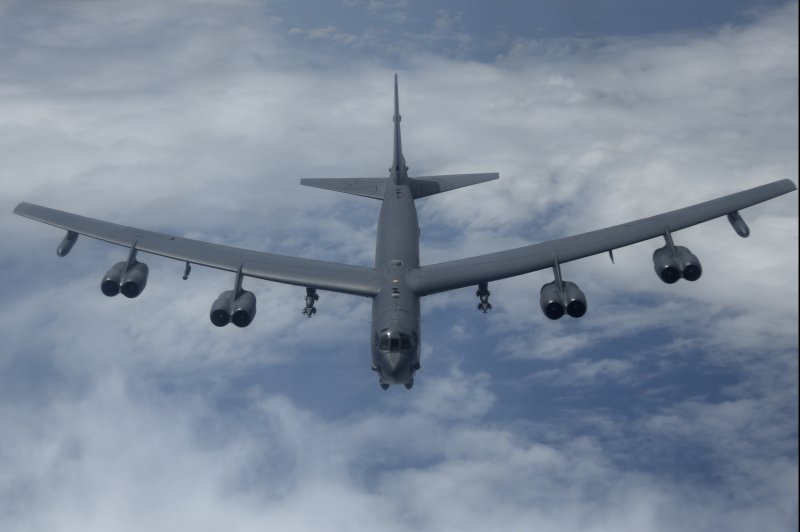1 of 2 | A U.S. Air Force B-52H Stratofortress bomber flies over the Pacific Ocean during a routine training mission on August 2. Photo by Airman 1st Class Gerald R. Willis/U.S Air Force
July 12 (UPI) -- Boeing has selected Raytheon to replace radar systems on the U.S. Air Force's B-52H Strafortress strategic bombers.
Raytheon will design, develop, produce and sustain active electronically scanned array radar systems for the USAF's fleet of 77 B-52 bombers, Raytheon announced Thursday. The radar is based on AESA technologies developed from the AN/APG-79/82 family and offers improved navigation reliability to support nuclear and conventional missions, according to Raytheon.
The contract terms weren't revealed by Boeing or Raytheon.
Low-rate initial production will begin in 2024 to accommodate the Air Force plans to stretch the B-52's mission readiness "through 2050 and beyond," Raytheon said.
"When it comes to years spent flying in support of our nation's defense, our new AESA radars give aircrews the eyes they need to achieve their mission for the duration of the B-52's service life," Eric Ditmars, vice president of Raytheon Secure Sensor Solutions, said in a news release.
The improved technology will lead to better mapping and detection range and an increase in the number of targets it can simultaneously engage.
"Along with improved capabilities that help crews see further and more accurately, Raytheon's AESA radar offers greater reliability than the current system because it has no moving parts and uses modern operating software," Raytheon said.
The system will replace Northrop Grumman AN/APQ-166 mechanically scanned radar.
"It's an old radar," a senior USAF official told Jane's 360. "A It doesn't have the reliability we'd like to have, and if you're flying long-duration missions and you get to a two-digit mean time between failure, it means you're flying around with a broken radar a lot."
Northrop Grumman had offered its AN/APG-83 AESA system, Jane's 360 reported.
Boeing has continually been modernizing the plane, which was produced between 1954 and 1962. The eight-engine, 390,000-pound jet was America's first long-range, swept-wing heavy bomber.
The company said its AESA radar family may be tailored to fit any platform's size, space and requirements.
"Whatever the task -- defense, surveillance, or strike -- warfighters rely on Raytheon's AESA technology for optimal mission assurance," Raytheon said.
The APG-82V has been installed on the Air Force's F-15E, the APG-63V on the Air Force's F-15C and F-15E, and the APG-79 on the Navy's F/A-18E/F Super Hornet and EA-18G Growler.















